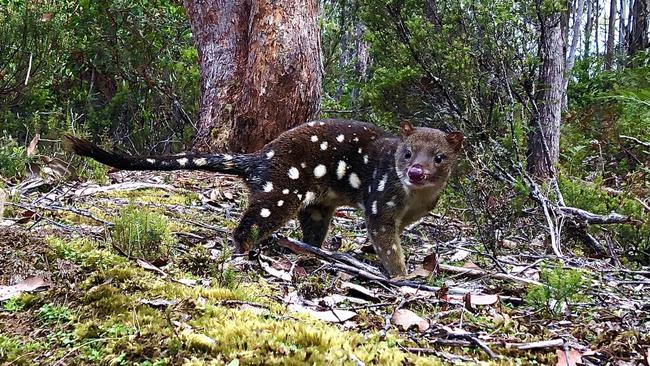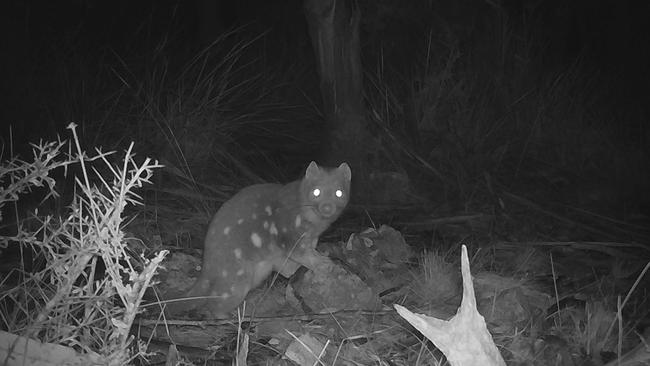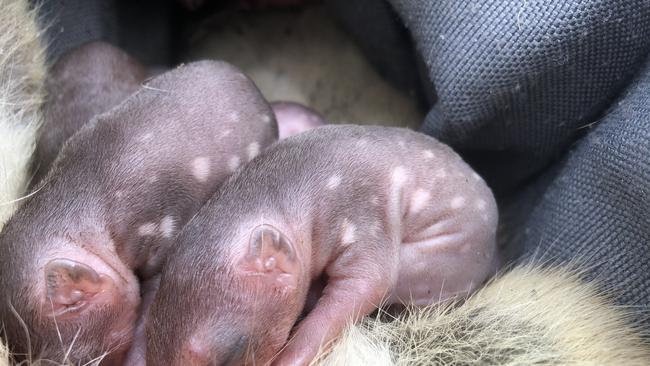Tasmanian devil decline changing genetics of fellow marsupial carnivore the spotted-tailed quoll
The long-term population decline of the endangered Tasmanian devil is having significant impacts on the spotted-tailed quoll, the state’s secondary predator. What UTAS researcher found.

News
Don't miss out on the headlines from News. Followed categories will be added to My News.
The long-term population decline of the endangered Tasmanian devil has changed the genetics of the state’s secondary predator, the spotted-tailed quoll, UTAS researchers have found.
The study, published in Nature Ecology & Evolution, reveals that the impact of the highly transmissible facial cancer on devil numbers had resulted in increased activity for quolls due to reduced competition for prey.
The global research team, which included UTAS marsupial carnivore expert Professor Menna Jones, found that the changes to the quolls’ habitat had actually led to changes in the species’ genetic make-up.
Prof Jones said predator declines were being observed around the world, and were having cascading ecological effects.
“We can see the activity of the spotted-tail quoll has shifted significantly in the regions where Tasmanian devils have severely reduced numbers,” Prof Jones said.

“Spotted-tailed quolls have shifted their peak night-time activity, from pre-dawn to avoid devils, to early evening with low devils when most prey are active and hunting is the best.
“We found that with fewer devils – Tasmania’s top scavenger – quolls are benefiting from more carrion and are spending more time feeding at carcasses.”
Over a 15-year period, researchers collected genome marker data from 345 quolls across multiple generations, seeking evidence of genetic variation linked with differences in Devil Facial Tumour Disease (DFTD) prevalence and geographical location.
They found that in areas where facial tumour disease was impacting the devil population, there was evidence of more differences across geographically separated quoll populations in genes relating to muscle development, movement, and feeding behaviour.

“It’s likely these genetic traits that appear to be shifting are involved in food competition between quolls and devils,” Prof Jones said.
“There is less competition and more food, reducing the need for quolls to move around as much or as far as they once would have.
“There’s also changing evolutionary pressure on physical performance associated with escaping from devils and fertility of the quoll populations as devil numbers decline.”
The research team hopes the “community landscape genomics” approach used in the study can be used internationally to gain greater understanding of the evolutionary consequences of predator declines around the world.




